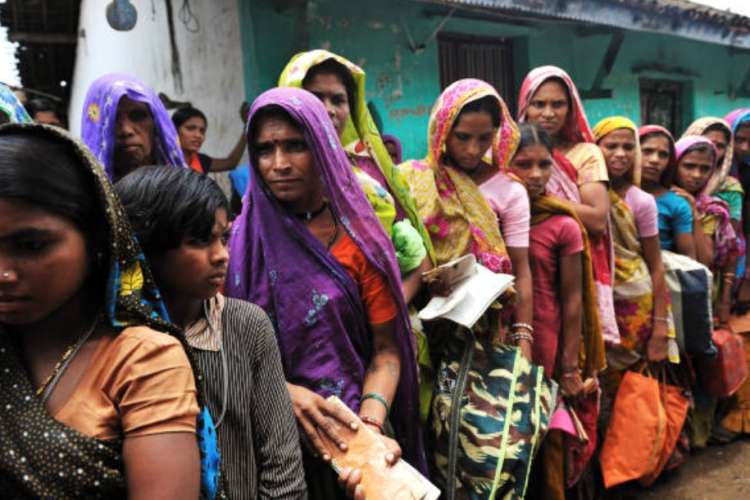
Unspent welfare funds in India: India faces a peculiar problem—while the Union government allocates substantial funds for welfare schemes, a significant portion remains unutilised, even as millions continue to grapple with poverty and inadequate public services. According to Union Budget 2025-26 numbers, nearly Rs 1 lakh crore earmarked for centrally sponsored schemes is lying idle in the single nodal agency accounts of various states.
Five key schemes—Pradhan Mantri Awas Yojana-Gramin, Jal Jeevan Mission, Urban Rejuvenation Mission, Saksham Anganwadi and Poshan 2.0, and Swachh Bharat Mission-Urban—account for nearly 45% of the unutilised funds. The underutilisation of welfare funds reveals deeper structural inefficiencies in policy implementation, bureaucratic inertia, and fiscal federalism imbalances that impede the effective execution of social programmes.
READ | Promise vs policy: Can Indian economy become a global superpower?
One of the primary reasons behind the accumulation of unspent funds is the prevalence of bureaucratic and procedural bottlenecks. Complex paperwork, delayed approvals, and interdepartmental coordination failures significantly delay fund disbursement. The lack of real-time tracking of fund utilisation further hampers accountability and prevents necessary course corrections. Moreover, capacity constraints at the state level aggravate the situation. Many state and local agencies lack the technical expertise and trained manpower required to efficiently implement large-scale schemes. Disbursement often lags due to inefficient project planning and execution, leaving critical development projects in limbo.
Mismatched priorities and political roadblocks
A fundamental issue in the underutilisation of funds is the disconnect between the Union and state governments. While the Union government allocates funds, the onus of implementation lies with state governments, leading to misalignment in priorities. The Centre’s increasing reliance on centrally sponsored schemes has further reduced states’ autonomy over their spending. Political conflicts also play a role in fund stagnation. For instance, Tamil Nadu’s stalled Samagra Shiksha funds illustrate how central funds are sometimes used as leverage in political disagreements.
The Union government has withheld Tamil Nadu’s share of Samagra Shiksha funds (Rs 2,152 crore) for rejecting the National Education Policy (NEP 2020), undermining cooperative federalism and harming the education sector. This reflects how financial decisions can be wielded as tools of political influence rather than for ensuring equitable development.
The Union government and the states are locked in a dispute over the declining share of financial transfers to states, which has intensified the problem. While the 14th and 15th Finance Commissions recommended a 42% and 41% share in net tax revenues for states, the actual share in gross tax revenue has declined to 30% in Budget Estimates 2023-24. Additionally, the increasing revenue collection through cesses and surcharges has reduced the pool of funds available for devolution to states, further straining state budgets. As a result, states struggle to match central allocations with their own financial resources, leading to delays in project implementation and fund absorption.
Consequences of unspent welfare funds
The inability to utilise welfare funds efficiently has far-reaching consequences for India’s development trajectory. Delays in critical infrastructure development continue to plague key sectors. For example, the Jal Jeevan Mission, which received an increased allocation of Rs 67,000 crore in FY26, still has Rs 8,169 crore lying unutilised in SNA accounts, leaving millions deprived of clean drinking water access. Similarly, housing and sanitation projects remain compromised, with the Pradhan Mantri Awas Yojana-Gramin holding the highest unspent amount of Rs 13,111 crore, stalling much-needed housing projects. Urban infrastructure improvements under AMRUT are also slow-moving, as Rs 10,964 crore remains unused in project accounts.
Educational and social welfare programs are also impacted, with delayed fund disbursal in schemes like Samagra Shiksha affecting millions of students and thousands of educators.
To address these implementation gaps, federal coordination must be strengthened. The Union and state governments must establish mechanisms for collaborative decision-making on welfare schemes to align spending priorities. The finance ministry should ensure greater transparency in fund allocation and utilisation, preventing political misuse of welfare funds. Additionally, improving fund disbursement mechanisms is crucial. The newly introduced SNA system, designed to settle unspent funds within 24 hours, must be rigorously monitored to ensure compliance. The Reserve Bank of India and the department of expenditure should accelerate real-time tracking of fund utilisation to prevent inefficiencies and disputes over interest payments on unspent funds.
Enhancing state-level execution
States must conduct a detailed assessment of underutilised funds to identify and address bureaucratic hurdles. Karnataka’s 2017 initiative, which repurposed unspent MLA and MLC Area Development Funds for short-term tenders on essential infrastructure, serves as a model for other states to optimise fund utilisation. By identifying reasons for delays—such as lagging approvals and inefficient planning—state governments can better strategise fund deployment and ensure timely execution of projects.
Strengthening fiscal federalism is also essential to ensure equitable financial devolution. The Finance Commission must re-examine tax-sharing principles to prevent excessive centralisation of financial powers. The current grant mechanism should be restructured to ensure that less wealthy states are not disproportionately burdened by the requirement to match central contributions. The existing system of centrally sponsored schemes should be revisited to allow for greater flexibility in state-level decision-making.
The accumulation of unspent welfare funds is a reflection of deeper inefficiencies in governance, fiscal decentralisation, and cooperative federalism. While bureaucratic hurdles and capacity constraints play a role, the fundamental issue is the increasing centralisation of fiscal powers, which undermines state autonomy and slows implementation. Unless these challenges are urgently addressed, India’s ambitious welfare programs will remain trapped in financial limbo, failing to deliver the intended socio-economic benefits to its most vulnerable citizens. The Union and state governments must work together to break this cycle and ensure that welfare funds translate into tangible improvements for millions of Indians.
